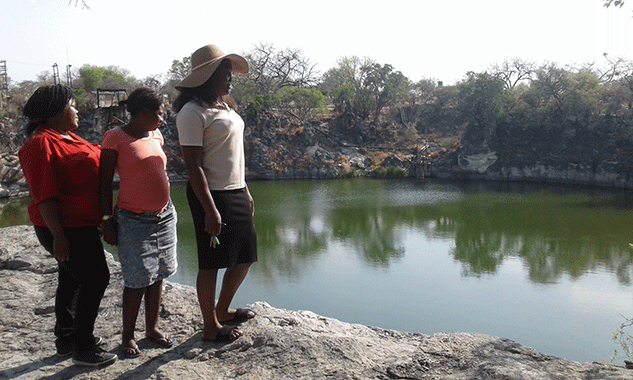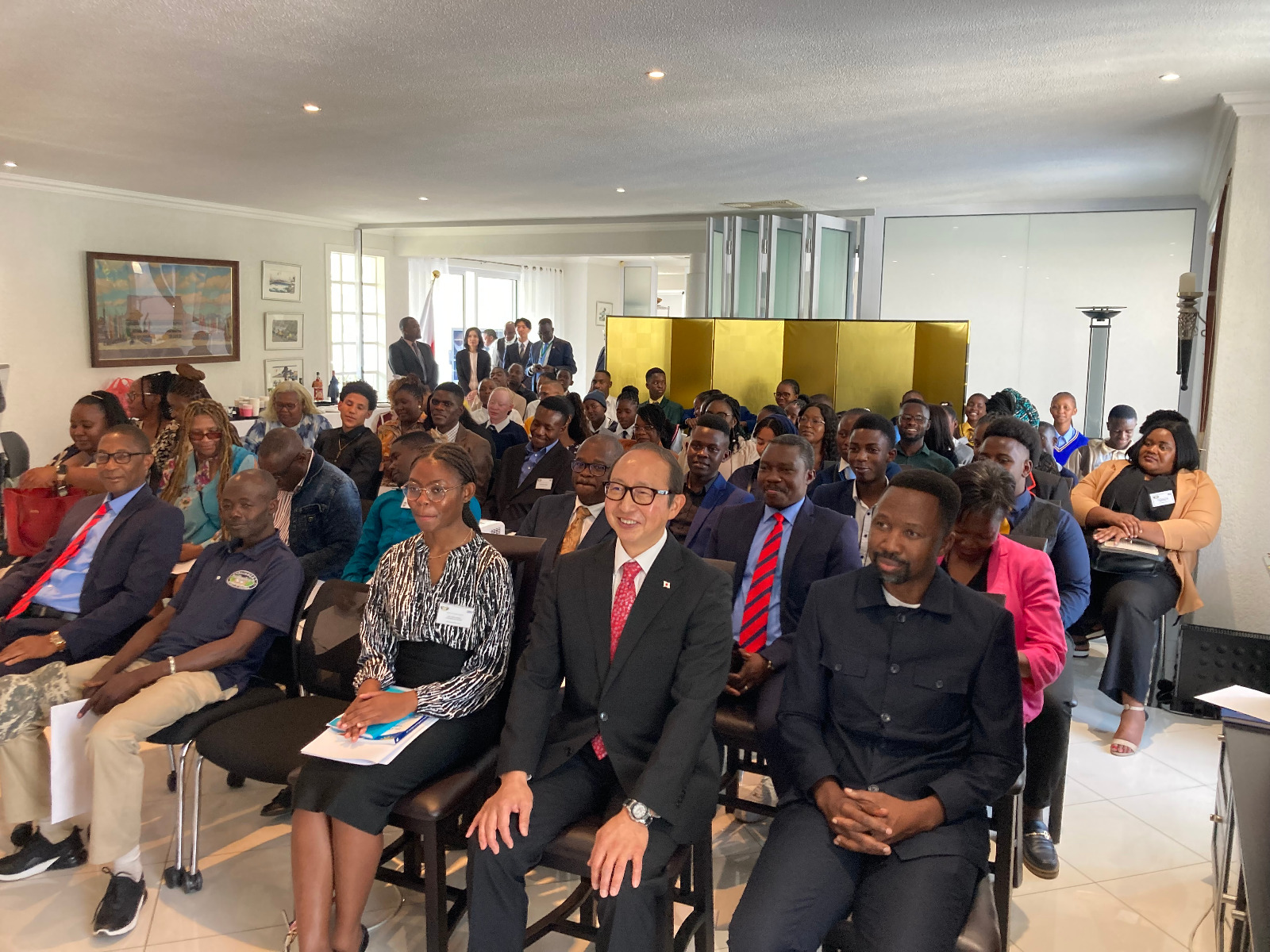TWENTY kilometres north of the copper town of Tsumeb, one finds one of the most fascinating wonders of nature.
Lake Otjikoto is found on a piece of land which was once a farm owned by the Tsumeb Corporation Limited mine. The lake is attracting many local and foreign tourists each day. We visited the lake over the weekend to gain an insight on the history of this national heritage site.
It is a deep and wide structure, formed thousands of years ago as a result of the collapse of dolomite rocks. It is surrounded by different types of trees, including the rare python tree. The rocks collapsed due to underwater activities, said Kaino Andreas, the administrator of the Otjikoto Lake heritage site of the National Heritage Council of Namibia (NHCN).
“It is complex for us to understand, but that is the information we were given by those who have studied the lake,” she told on Saturday.
The lake is 123 metres long and 102 metres wide. Its depth remains a mystery to this day. This is because no one has ever reached its bottom. “The water underneath is running, and gives a lot of pressure as one goes deep down. The pressure is so big that it can even damage a diver’s ears. The furthest some divers have gone was 145m deep. They went down to that depth; nobody had [ever] gone deeper than that,” she explained.
Another interesting fact about this wonder of nature is that it becomes wider as it goes down.
Many tourists visit the Lake Otjikoto heritage site each day to view the lake. At a fee, they are able to view the structure and its surroundings, as well as get some history and facts about the lake. There is also a craft shop selling crafts from the Hai-//om San people who live in close proximity of the lake.
Apart from being a tourist attraction, the lake is also a good source of agricultural water. It irrigates two nearby farms, and also supplies a nearby location with water. The water is confirmed to be safe for household use, Andreas added.
These are not the first water projects from the lake, though. During the First World War (1914-1918), as Germany mobilised soldiers and resources from her colonies, including Namibia, then German South West Africa, the Germans were mining copper at the Tsumeb mine. The copper was shipped back home to manufacture war supplies. Mining being an activity that requires vast amounts of water, the Germans drew water from the lake to the mine using a steam pump. Metal pipes from the lake to the mine at Tsumeb are still visible, and in good condition.
After losing in a battle to Allied Forces during the war, the German military threw all their guns and ammunition into the lake. These include cannons and other heavy weapons of the time. Some have been retrieved over the past years, and are displayed in the Tsumeb museum. Others still lie at the bottom of the lake, with no prospect of ever being pulled out.
Although deep and dangerous, Lake Otjikoto has found friends in divers who always come to hone their diving skills.
“Divers from the Namibian Police in Windhoek, Kavango and Oshakati and some divers from private schools always come here for their exercises. I think its composition makes it an ideal place for them to train,” Andreas stated.
The lake, also surrounded by rocks, can be dangerous too. Thus, it is advisable not to move too close to it because if a person happens to fall in, the chances of surviving are slim as there are no divers or rescue equipment on site. Nonetheless, no drowning incident has been reported since German Johannes Stephanus drowned a few days before Christmas on 16 December 1903.
Want to pay it a visit? There cannot be any excuse, because the site is open from Monday to Sunday from 08h00 to 17h00.
Stay informed with The Namibian – your source for credible journalism. Get in-depth reporting and opinions for
only N$85 a month. Invest in journalism, invest in democracy –
Subscribe Now!






